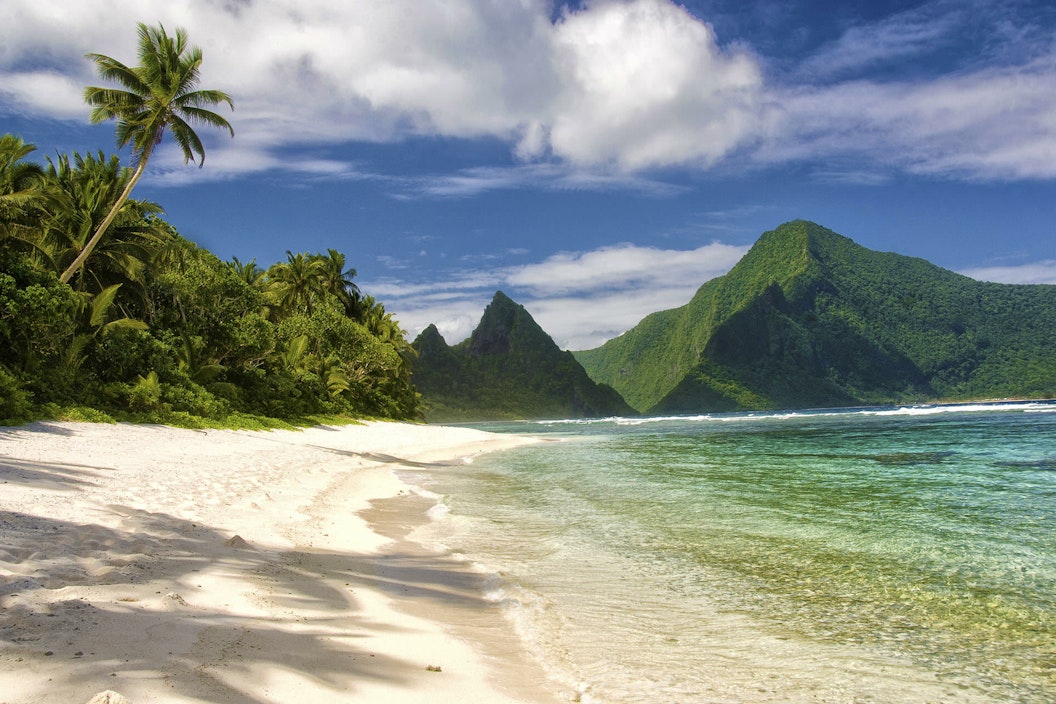
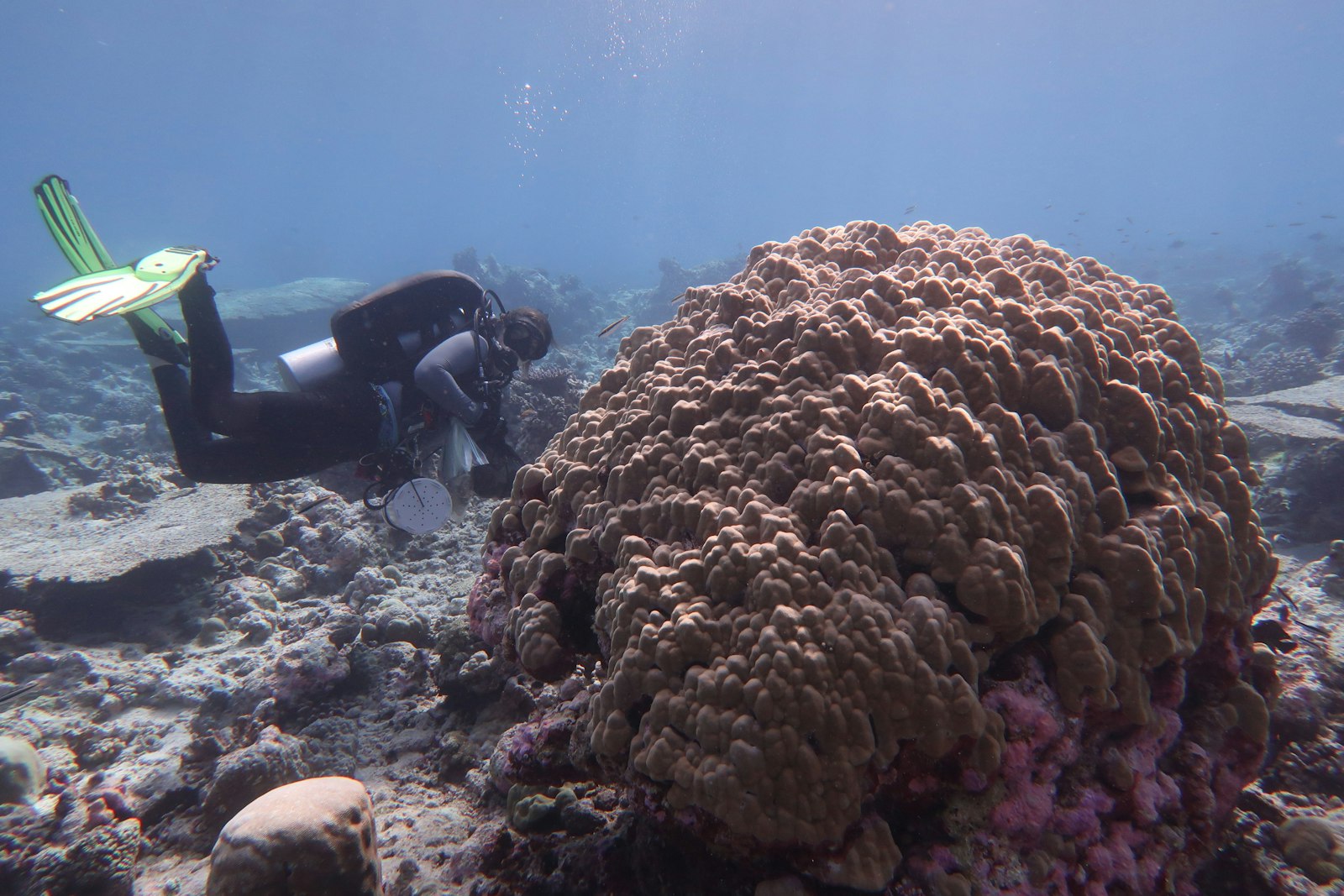
.
.
Veronica Radice has always been captivated by the complex world that exists beneath the ocean’s surface. Now, as a National Park Foundation science fellow, she can explore her childhood curiosities, delving into the depths of the ocean to investigate species and ecosystems that are more fascinating than she could have imagined.
As a postdoctoral research fellow at Old Dominion University, Dr. Radice will travel to National Park of American Sāmoa to study mesophotic coral reefs – a complex ecosystem of reefs that live in the “middle-light” zone between shallow reefs and the deep sea (meso, meaning “middle” and photic, meaning "light"). Her studies will help the National Park Service learn how to best protect the 88 ocean and coastal parks preserved as part of the National Park System. We had the pleasure of hearing from Dr. Radice about her adventures, including the fascinating subject of her latest research project, how her research will help address unanswered questions, and about her unique experience as a woman scientist and diver.
What Drew You to this Field of Scientific Research?
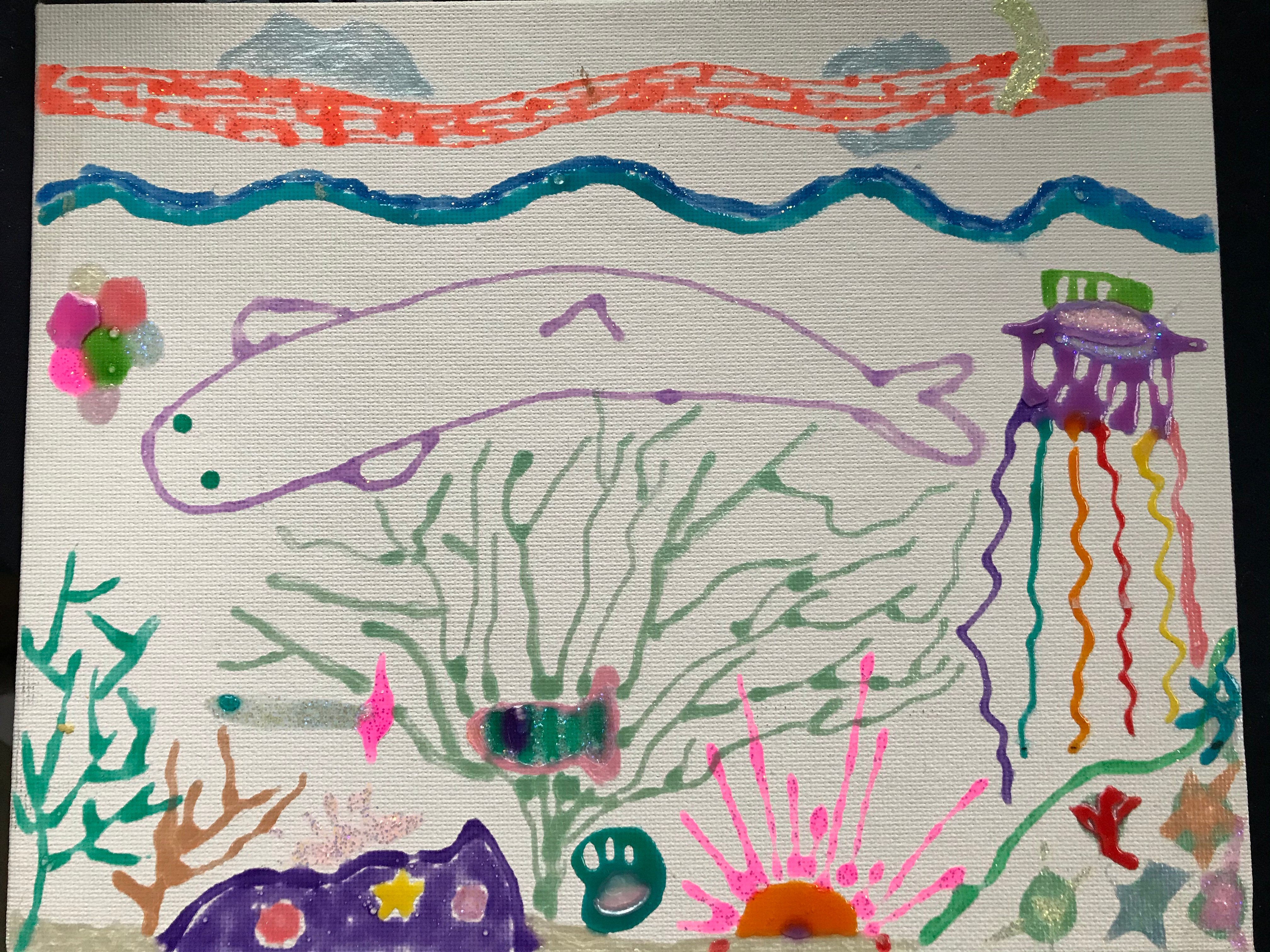
I have been fascinated by the ocean and its creatures since I was little, despite not living by the water. My mom recently dug up some of my early drawings and paintings and so many of them show my interest in the ocean! I grew up near a creek and I remember taking water samples and having a chance to look at them under a microscope. When I was thirteen, I had the opportunity to see and discover a coral reef, for the first time, with my own eyes in Kauaʻi, Hawaiʻi. The wonders of the magical underwater world really blew me away and following that, I was hooked on books and DVDs about coral reefs. I was very interested in science in general, and I completed my Bachelor's degree in Biology at Johns Hopkins University. Following graduation, I worked for two years as a research technician and lab manager in the deep-sea ecology laboratory of Dr. Erik Cordes at Temple University. I then was selected for an international Ph.D. scholarship in the lab of Drs. Ove Hoegh-Guldberg and Sophie Dove at the University of Queensland in Brisbane, Australia, where I lived for six years. During my time as an XL Catlin Ocean Scholar, I had the chance to dive in incredible reefs across the Indo-Pacific oceans and I focused my Ph.D. research on the shallow and deep reefs of the Maldives in the Indian Ocean. So far, I've dove in 11 different countries! Currently, I'm an NPF postdoctoral research fellow at Old Dominion University in the lab of Dr. Daniel Barshis in Norfolk.
What Do You Want People to Know about Your Experience as a Woman in Science?
I have been very fortunate to be supported by a wonderful group of scientists, as well as non-scientists, along my journey so far. I think close mentors and a strong support system are critical as you develop both professionally and personally as a scientist.
Sometimes there are situations where it's harder to have your voice heard as a woman. This can happen anywhere, unfortunately, but can create especially challenging situations when working as a woman scientist conducting field work in countries where women may struggle to be heard. There are also various issues that may arise for a woman scientist conducting field work, and there is a lot that needs to be done to make sure that all women are safe.
I think there is still a lot of work to be done in terms of equality, especially for supporting women in scientific roles including retaining and advancing women in science post-Ph.D. Despite the challenges, I feel empowered by the open conversations about women in science and women doing field-based research. I feel a strong sense of sisterhood, and I can see that the broad scientific community supports changes to make science more inclusive. However, the statistics of women in science remain disappointing and the fight for equality continues, building on the paths and progress of women who came before me.
Can You Tell us about Your Research Project and What it Will Accomplish?
Global climate change has already had drastic effects on many different ecosystems. In marine ecosystems, ocean warming is the biggest threat to coral reefs. Coral bleaching is the visible symptom of the breakdown of the vital and complex symbiosis, or partnership, between the coral animal host and the photosynthetic algal symbiont community that lives within the coral host tissues. Abnormally warm ocean temperatures due to climate change have caused mass coral bleaching events globally during at least the past three decades, with bleaching events becoming more severe, frequent, and widespread.
My research project will focus on the effects of oceanic heat stress on corals. Specifically, my project will investigate the impacts of heat stress on a rather understudied group of corals from deep reefs, called mesophotic reefs. I will evaluate the thermal threshold of corals, comparing the temperatures at which shallow versus mesophotic corals bleach and using various physiological measurements of both the coral host and algal symbionts to try to understand their response to heat stress. Further, I will study the genetic mechanisms of the different groups of corals under heat stress conditions.
Mesophotic coral reefs are understudied, and it is rare to observe mesophotic coral bleaching underwater because it requires a team of specialized divers and sufficient funding for special equipment to be at the right place at the right time – all the stars must align! Our approach therefore is to experimentally test thermal tolerance in mesophotic corals, with the aim to understand how the differences in environment and potential genetic differences relate to their response.
Many Are Likely Familiar with Coral Reefs, but What are Mesophotic Coral Reefs? What Makes Them Such an Interesting Subject Matter?
Mesophotic reefs comprise the “middle-light” zone between shallow reefs and the deep-sea. The mesophotic zone is typically represented by depths between about 30-150 meters depth, or approximately 100-500 feet, but it ultimately depends on the available light at a given location. How clear or turbid is the water? Despite the lower availability of light in the mesophotic zone, there remains sufficient light from the surface for photosynthetic organisms to harness energy from the sun. In this case, the algal symbionts of mesophotic reef-building corals can still obtain light from the sun and use it to create and share food with their coral host. However, mesophotic corals have adapted in various ways to the changes in environmental conditions (for example, light, temperature, nutrients). This includes changes in coral morphology: for example, the shape of the coral – is it branching, or flat like a plate, or round like ball? Reef-building corals occur across large depth ranges in part due to the physiological flexibility of the symbiosis between coral animal hosts and the algal symbionts within their tissues.
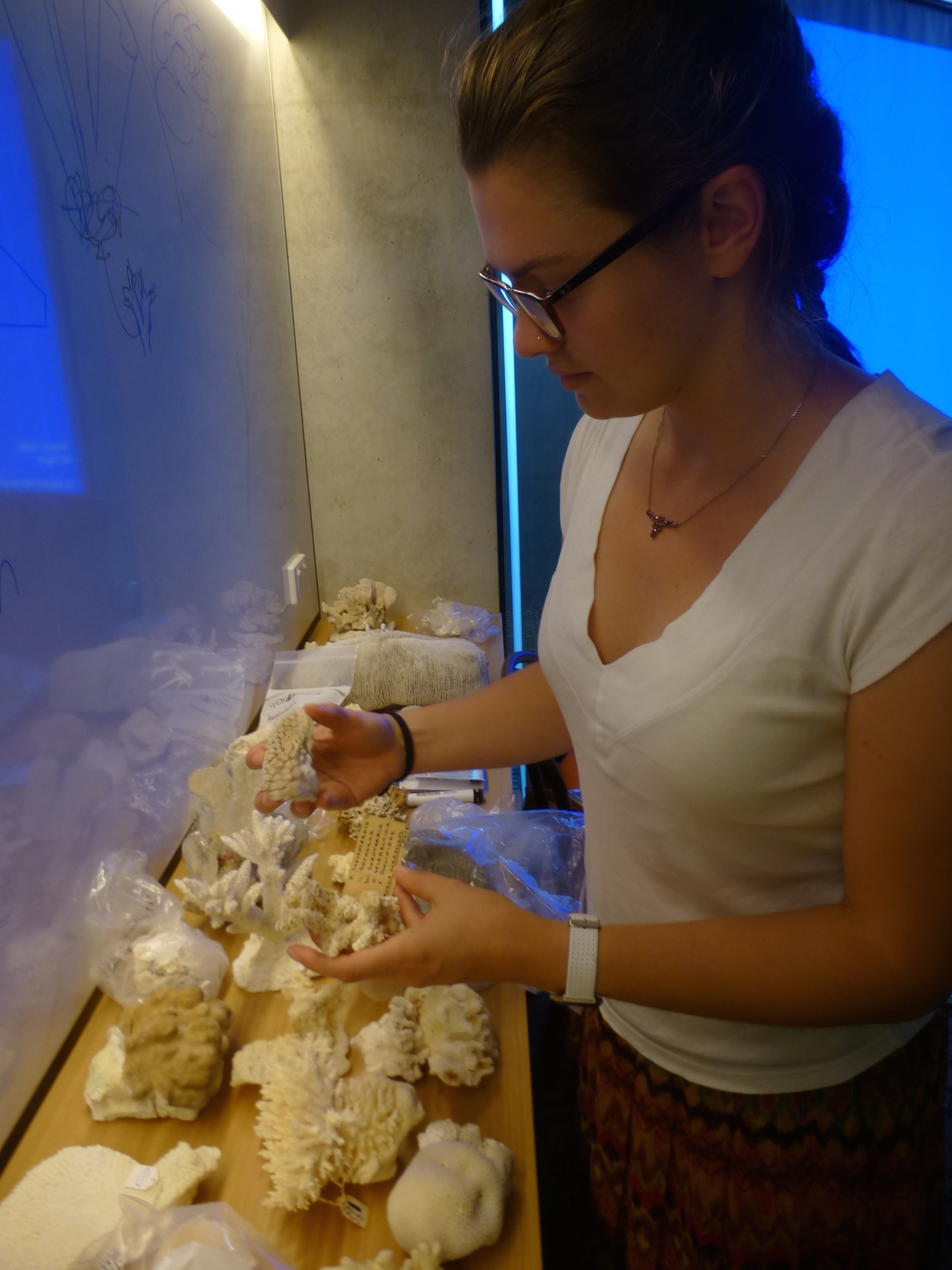
Mesophotic coral reefs are unique ecosystems and there is so much more to learn and discover! Due to their deeper depths, it is very challenging to access mesophotic reefs. To study them, scientists undergo advanced scientific diving training and may use specialized technology such as remotely operated vehicles (ROV) or human-occupied submersibles, but those are expensive, and far and few in between! Substantial resources are required to obtain and maintain specialized diving equipment and technology, not to mention shipping it to your field site!
Besides the many intriguing biological and ecological questions about mesophotic reefs, there is a great interest due to the outstanding questions of how they are under ocean warming. Because they are located deeper on the reef slope, there have been hypotheses about whether mesophotic reefs may experience reduced heat stress. If deeper mesophotic reefs are spared from mass coral bleaching, could they possibly help to repopulate shallow coral reefs that are damaged by coral bleaching? But how different are mesophotic coral populations from shallow coral populations – are they genetically distinct or similar? Conversely, are mesophotic corals more susceptible to ocean warming because they typically experience cooler, more stable temperatures?
Where Will You Be Conducting this Research?
This research project will take place in American Sāmoa, in various locations around the island of Tutuila. The National Park of American Sāmoa, one of eight national parks in the Pacific Islands, is located across several islands. In American Sāmoa, reefs at mesophotic depths represent 79% of the nearshore marine habitat yet only 6% of mesophotic habitats are protected as federal, territorial, or local marine protected areas. The earliest in-person diving surveys of mesophotic coral reef ecosystems of American Sāmoa only occurred in the 2000s! One third of known reef-building coral species live mesophotic depths in American Sāmoa, but a majority of mesophotic reefs remain unexplored. There is so much more to learn about mesophotic reefs of American Sāmoa, and the fellowship has provided a unique opportunity to conduct research in these understudied reefs.
How Do You Conduct Your Research Under the Ocean's Surface?
I’m a trained scientific diver and scuba dive to 30 meters depth for my research. Also, a small group of my colleagues including the principal investigator of the lab, Daniel Barshis, have additional specialized training to diver to deeper depths (for example, 60+ meters) using closed-circuit rebreathers. When I dive to these lower-light deep reefs, I really enjoy the initial descent from the shallow reef swimming down the reef slope to where the color of the water becomes darker and darker blue. As you swim down the reef slope, there are really interesting changes in the reef community composition, including different types of benthic organisms (that is, organisms that live on the bottom) and clear changes in reef structure and coral morphology. At deeper depths there is less light coming from the surface, so the water appears bluer and it's darker in general, and we need to bring strobe lights with us when we are doing photographic surveys of mesophotic reefs. When diving to mesophotic reefs, I’ve experienced swimming through a "thermocline" in the water column, a transition point in seawater temperature between warmer mixed surface waters and cooler deep seawater.
I find the atmosphere underwater very calming. From the moment you descend into the water, it’s a rhythmic, almost meditative experience of slow, calm breathing through your regulator. After checking all your equipment and signaling that your dive buddies are all set, your senses are mostly overtaken by the environment in front of you. Observing the reef environment is so important in thinking about and trying to understand the complex interactions occurring from the micro- to macro-level in the ocean.
What Kind of Training was Involved with Learning to Dive?
Living in Pennsylvania, the first scuba diving certification training that I undertook was a recreational open-water scuba diving certification (PADI), followed by an advanced open-water and Nitrox certification. If you don't live close to the ocean, you can still learn how to scuba dive! All my early training, in the U.S. and Australia, took place in old rock quarries filled with water. It's not the most glamorous diving conditions, but it is best to train in more challenging conditions (such as low-visibility, cold-water, currents, and more) so you learn more skills and become confident to adapt to various conditions when you encounter them in the future.
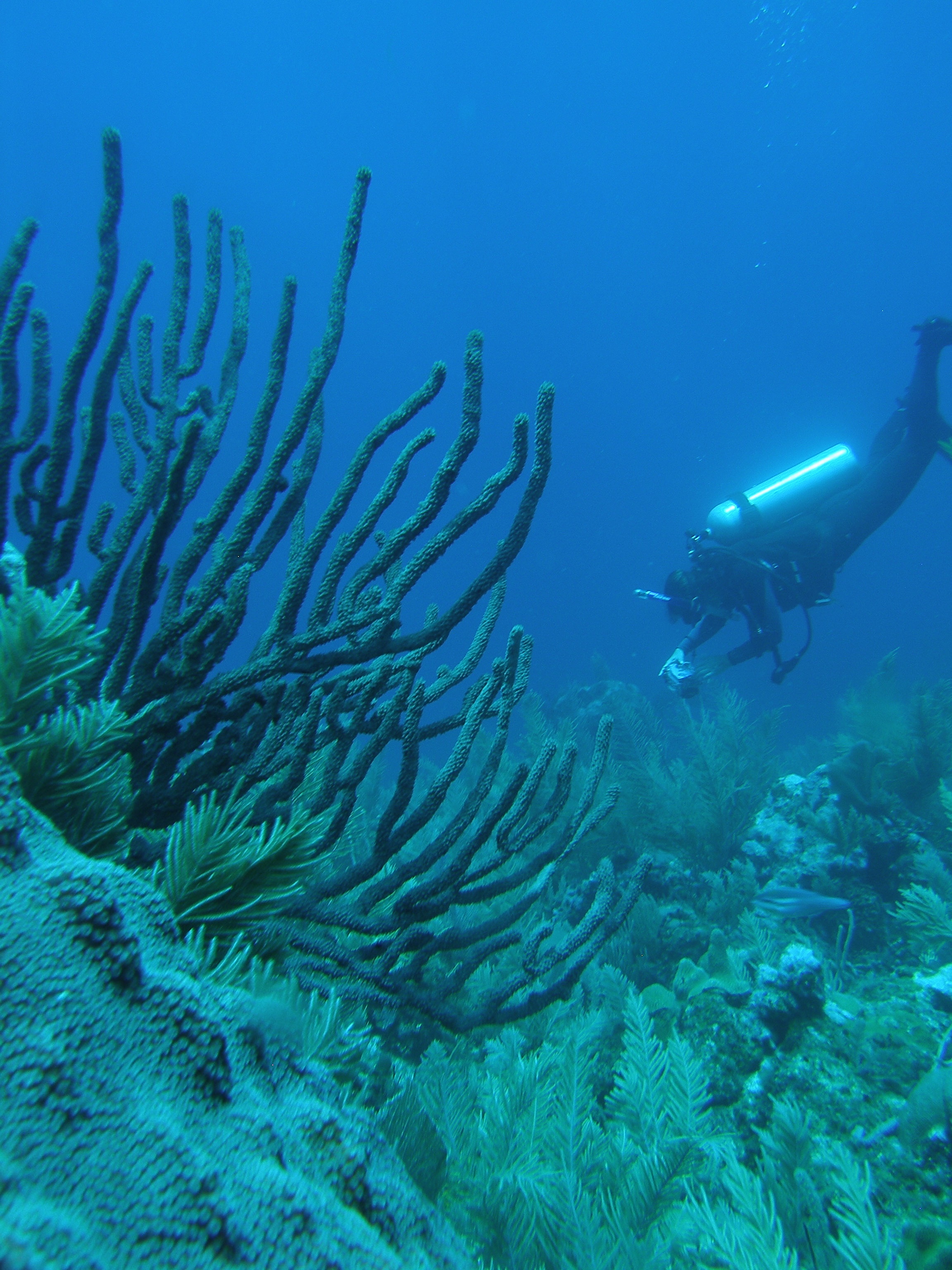
When I started my Ph.D. program in Australia, I completed an intensive, advanced scientific diving course through the national commercial diving sector (Australian Diver Accreditation Scheme). This course included deep diving, search and rescue diving, using a face mask with underwater communications, survey techniques, using various tools, diving using a mixed Nitrox gas blend, among other skills and physiology and physics! The key to feeling comfortable underwater is extensive training with an experienced team, practice, and the knowledge of experience from various types of dive situations. Sometimes the weather conditions are less than ideal, but you learn from being in situations that are not so fun, like throwing up underwater! Yes, it is possible to get seasick under water!
There are limits to the “bottom time,” or the time spent at the maximum depth, while scuba diving. The amount of bottom time can vary slightly when using a mixed gas, but typically we have less than 15 minutes at our bottom depth of about 30 meters depth, so we have to accomplish a lot of work quickly! However, as you ascend to shallower depths, your diving time extends and typically dives can last up to an hour or so, depending on how much air you use. For closed-circuit rebreather divers, I know colleagues who dive for several hours! However, this is unique to a highly specialized, small group of scientific divers that are performing very deep mesophotic diving down to 150 meters.
What Advice Do You Have for Someone Interested in Pursuing a Career in Environmental Science? Any Particular Words of Wisdom for Women Entering the Field?
I think it is important to try to gain experience in different scientific fields as much as possible. Even if you already have a strong interest in a particular topic, it’s a good idea to learn broadly. For example, although I felt compelled to pursue graduate research in marine science, I completed various internships and research projects such as studying cardiac arrest in mice, maternal genetic mutations in zebrafish, seawater carbonate chemistry, and terrestrial and marine ecology. I also have a strong passion for languages, so I did my best to combine my interest in language and science by applying for and traveling to France for an internship at a marine biology station. Hands-on learning experiences are so valuable. Don’t be shy to talk to people and reach out to scientists and educators with questions and inquiries about potential opportunities. With technology, there is even greater connection in the world today, and there are many people out there willing to help an aspiring young scientist.
As the National Park Service (NPS) enters its second century of park stewardship, it’s vital that it is equipped with the latest scientific research to make informed decisions about managing its 85 million acres of land and water. Thanks to a generous gift from Karen and Brian Conway, the National Park Foundation (NPF) provides science fellowships for three post-doctoral researchers who conduct experiments on-the-ground in our national parks. These fellows join a team of NPS co-mentors and a faculty advisor in gathering cutting-edge, innovative research.